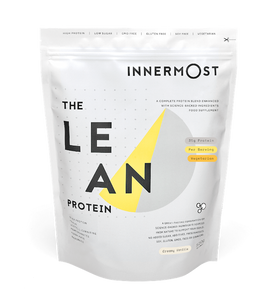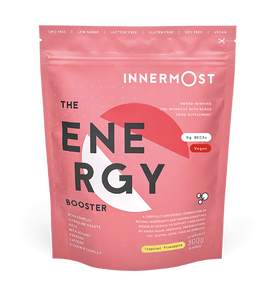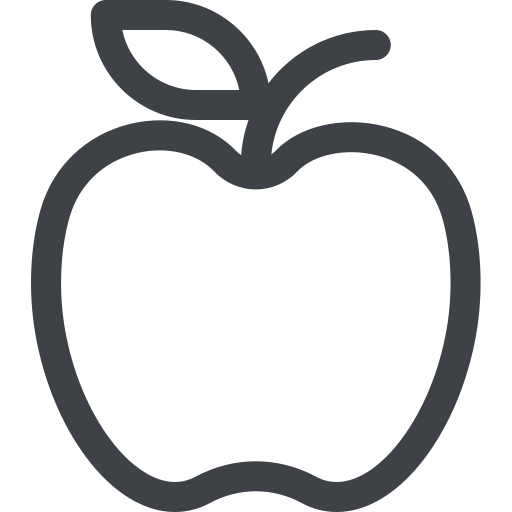Over the past couple of years, you've probably seen or heard something about a detox, detoxification, or detoxing, whether it's to do with a lifestyle or diet change. What really is a detox, though? It's a very good question.
It's important to get the clarification between detoxing and health trends such as 'extreme cleanses' correct, as this is what can be daunting, and put a lot of people off taking part in a detox.
The word 'detox' has quickly become a bit of a dieting buzzword, and we want to make sure that the idea behind a detox doesn't become misconstrued through the sharing of misinformation or otherwise, through fad dieting ideologies.
Don't panic, though, it can all be quite confusing to say the least. Sure, the whole process can be great for your body. If you approach your detox in the wrong way it may do more harm than good. But do your research and follow a well organised and reputable program and you can cleanse and boost your body (and mind) in all kinds of positive ways. The Detox Booster can definitely help with that, too.
But first - what is detoxing? Let's take a look, shall we?
What is detoxing
Put simply, to 'detox' or the action of detoxing refers to the natural removal of toxins from your body. Some signs that you need to detox may include unexplained fatigue, irritated skin, frequent mood swings and more, but generally, when detoxing, the focus should be on eating 'clean' foods and ensuring you are following a healthy lifestyle. Healthy habits are key - none of those unhealthy fad diets or unnecessarily strict juice cleanses. It's all about balance.
It's important not to get caught up in the marketing discourse of detoxing and cleansing. Often, giant companies are pushing restrictive and downright harmful diet trends in a bid to market their products. A successful detox is one that employs healthy habits, healthy eating and a healthy lifestyle to assist our body and our immune system.
We like to think of detoxing of a mix of diet and lifestyle, that incorporates a healthy mix of food, supplementation and exercise.
Here are the big 5 benefits of detoxing...
- Remove toxins
Detoxing helps your body to remove excess waste and help to make sure your liver, kidneys and colon all function the way they should. Even after you complete your detox program, it’s still a good idea to keep eating lots of fruits and vegetables which help the colon to keep things moving.
- Strengthen your immune system
One of the biggest questions surrounding detoxing and detox culture is "Detoxing not only allows your organs to work properly, it also gives your immune system a boost.
By maximising your intake of nutrients like Vitamin C, your body is better able to fight off infections and keep you feeling the way you want. Many detox programs also build in plenty of exercise, which obviously helps to keep your circulation healthy and strengthen the immune system.
- Improve your skin
Your skin is the largest organ in your body – so don't overlook its importance. In addition to cramming in all the right kinds of food and drink, a good detox should also incorporate hot saunas.
They'll help your skin sweat out those nasty toxins and leave it smoother and clearer. Don't worry if your skin gets a bit patchy or a few spots pop up here and there – that’s the result of the cleaning process and things will improve as you continue your detox.
- Freshen up your breath
Some reports suggest that bad breath can occur when toxins build up in the colon. So a complete detox program will also incorporate a colon cleanse to maximise the removal of toxins from your body. That should keep you smelling fresh as well as feeling that way. Cleaning the colon also helps to keep your digestive system working properly.
- Stay young
Toxins, in particular free radicals, contribute to the ageing process. Reduce your intake of toxins and you'll not only feel good in the short term, but also help to stay looking younger for longer. And once the detox is complete, try and keep up some of those good habits. An improved diet and more exercise both play a big part as you continue to reap the anti-aging benefits.
Summary
So, is detoxing healthy? Absolutely. The word 'detox' or 'detoxing' can be pretty daunting at first, but it's important to make sure you are properly clued-up when it comes to the ins-and-outs of detoxing before you implement it into your routine.
Detoxing isn't the same as an extreme cleanse, and really, it can be something as simple as just removing something from your diet, implementing a regular exercise routine or even upping your water intake to have a positive affect on your health: mental or physical.


















